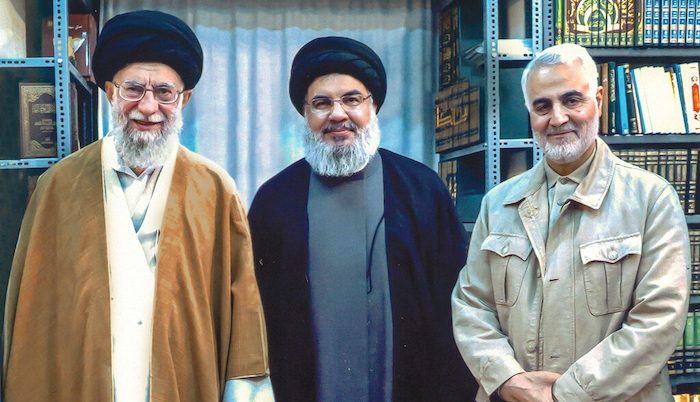
With the assassination of Major-General Qasem Soleimani, the vanguard of Iran’s military policy of asymmetric warfare, the person who is credited for expanding Iranian power in the whole of Middle-East, Iran has suffered a serious blow and the region will face repercussions for several years. Yet, the most important question is that whether setbacks such as this, and the resulting incidents such as the accidental downing of a civilian airliner, pose a threat to Iranian regime? For context, the Islamic Republic survived Saddam Hussein’s wrath for eight years during the Iran-Iraq War in the 1980s, endured student protests during the end of the twentieth century, overcame the Green Movement in 2009, has managed to protect its allies and itself from the Arab Spring uprisings from 2010 onwards, has been able to maintain a deterrence against western allies like Saudi Arabia and Israel and has played a key role in the conflict against ISIS. Most recently in 2019, it also brutally quelled a series of domestic protests which started against fuel price hikes but eventually grew into a threat to regime.
US officials have repeatedly debunked rumors against pursuing a regime change in Iran. Most recently US President Donald Trump confirmed that he too doesn’t seek a regime change. Yet, the United States has been eagerly waiting for the Islamic Regime to fail since 1979. a range of voices within the United States (including pro-Israel and pro-Saudi Arabian groups) have consistently advocated for regime change through military intervention. But, the United States military and civilian leadership knows that due to its size and military capabilities, regime change in Iran is a sustantial effort that would have serious repercussions across the region.
Iran, knowing that it will never be able to compete with the United States and its allies in conventional warfare, has set up a systematized network of proxies in the region, for example Hashed-al-Shaabi, al-Badr organization, Kataib-Hezbollah, Islamic Jihad and via its support to Houthi rebels in Yemen and Hamas in Gaza Strip. These proxies were set up with an intention to create an axis of resistance and were a part of Iran’s doctrine of Forward Defence Policy to protect the only Shia-ruled country in the Sunni-dominated politics of Middle-East.
An example of the unpredicatable nature of Iran’s influence was witnessing Soleimani’s death uniting rival political factions – which seemed unbelievable. This may also indicate that words spoken by Trump, labelling the slain general as a ‘terrorist’ and comparing him with erstwhile ISIS commander Abu Bakr al-Baghdadi, were unwise.
The US should realize that Iran is not a typical nation state but a civilization state tracing its roots to the Persian Revolution, and that politics in Iran precede any modern nation state. As a Shia majority state, it has tendency to revere their martyrs. The Shias have always remembered the legacies of their martyred ancestors starting from Imam Ali. The killing of Soleimani has made him a martyr and has instilled a wave of nationalist pride among the Iranians.
This feeling of martyrdom was even witnessed during Iran-Iraq war when Iranians as young as 12-13 years of age were willing to conduct fidayeen attacks on Iraqi army for the sake of getting a place in paradise. The US invasion of Afghanistan and Iraq in the early 2000s, coupled with ongoing US presence in both countries has instilled fear and a new national pride among the Iranians thereby extending their support for the Iranian regime.
Additionally, the notion that economic sanctions will create a share of domestic problems like unemployment and inflation thereby tipping the balance in favor of regime change is baseless. Sanctions have been in effect for decades and have not had such a result.
There have been instances in the past where the Iranian leadership has bowed down due to external pressure like the release of US hostages in 1981 by Ayatollah Ruhollah Khomeini due to diplomatic isolation and economic backlash which the country faced. A recent example would be Hassan Rouhani’s administration coming to the negotiation table for the JCPOA nuclear agreement in 2015.
Revolutions typically meet their end sooner or later and the right strategy against Iran is not regime change but regime collapse which requires much more than imposing sanctions. It will involve a comprehensive and constant system of pressures, beyond economic sanctions so as to aggravate the internal problems so that the only resort left to the common masses is sabotaging the system, thereby undoing the regime. The recent accidental shooting down of a Ukrainian-bound passenger jet by Iran has fueled new protests in Iran and some observers have claimed that the regime is now at its most vulnerable point in its history. With thousands chanting “Death to the Dictator” in Tehran’s Azadi Square, this is indeed perhaps the most critical phase witnessed by the Regime.
Caught in a massive wave of protests, it is the perfect time for a transition of power in Iran but for maximum effect, this time, the United States should work on it in a peaceful manner unlike it did in Iraq and Afghanistan.
Further Reading on E-International Relations
- Opinion – Iranian Soft Power in a Post Soleimani Era
- Opinion – The Iranian Regime’s Continuing Oppression Amid Growing Protests
- Opinion – Is the Next Middle East War on the Horizon?
- Opinion – 2020’s Dawn: Coronavirus, Natural Disasters and Political Insecurity
- Opinion – Could the Sino-Iranian Agreement Weaken US Hegemony?
- Trump is Right About Iran, Yet Wrong